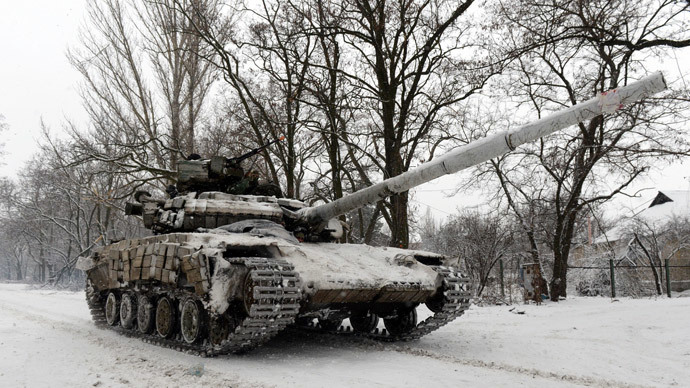‘Sustainable Ukraine demarcation line must reflect realities on the ground’

The self-proclaimed Donetsk and Lugansk Republics are demanding the so-called ‘contact line’ with Kiev forces agreed in Minsk be renegotiated. Security analyst Charles Shoebridge agrees that any demarcation line should reflect realities on the ground.
Two attempts to reach a peace deal between the self-proclaimed eastern republics and Kiev brought no results from meetings in Minsk.
With civilians living close to the battle zone at constant risk of being shelled by the Ukrainian army, the east is demanding an immediate ceasefire – and a change to the existing “contact line” stipulated in the Minsk agreement. The republics want the new demarcation line to correspond with their latest push against the Ukrainian army besieging their capitals.
READ MORE: Constant shelling in Donetsk as peace talks in Minsk end in blame game
Security analyst and intelligence expert Charles Shoebridge told RT that indeed, any viable demarcation line should not only be drawn as far away from densely populated areas as possible, but also reflect geographical realities on the ground.
RT:Anti-government forces want to change the confines of the battle zone which were set during the first Minsk talks back in September. They say otherwise more civilians will die. Isn’t this demand justified?
Charles Shoebridge: It really does make sense that any demarcation line – not necessarily the current time contact line, but any ceasefire, agreed ceasefire line – must reflect realities on the ground.
That’s to say that it needs to take account of the physical realities on the ground, for example, where the urban centers are, the way that terrain lies, and the way that communications, for example roads and railways, also lie in that area.
So it can’t just be agreed that where the forces currently are is where the line should be. And particularly in respect to the civilian populations of major urban centers – these need to be as far as possible. It is difficult in this area because it’s relatively densely populated, but these urban centers need to be out of the range, as far as possible, of the heavy weaponry that currently is causing so much civilian suffering in places such as Donetsk.
And clearly therefore it seems a legitimate demand that a demarcation line, if you like, a ceasefire line, should reflect not just realities on the ground but also the future sustainability of that line in terms of keeping civilian population centers away from, as far as possible, heavy weaponry of both sides - but particularly the Ukraine government side which is currently shelling areas such as Donetsk on a daily basis.
And in this respect, the OSCE on the ground, as impartial monitors, have a crucial role of course in, if you like, policing, or at least observing and monitoring the implementation of that ceasefire and ceasefire line itself.
If there’s going to be a ceasefire, it needs to recognize the situation on the ground. The rebels control the airport but perhaps they could be prepared to hand it over in return to some negotiated settlement. It’s really clear that the demarcation line, if it comes about, needs to be sustainable, that’s to say that it should really be as far as possible involving straight lines of following geographical features on the ground.
So that not only is it observable and can be enforceable or monitored, at least by people such as the OSCE, but also so that it doesn’t, for example, involve enclaves of one side of the other going into the other’s territory, which always is going to present opportunities, or challenges should we say, for those forces on the ground. It needs to be as sustainable as possible.
MORE:
The statements, views and opinions expressed in this column are solely those of the author and do not necessarily represent those of RT.












